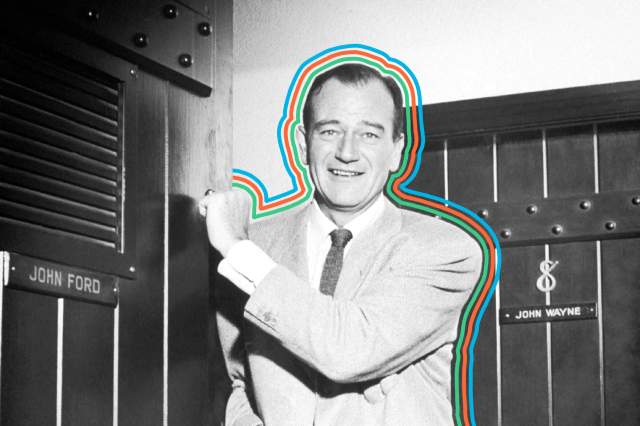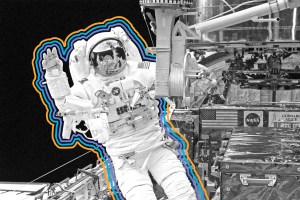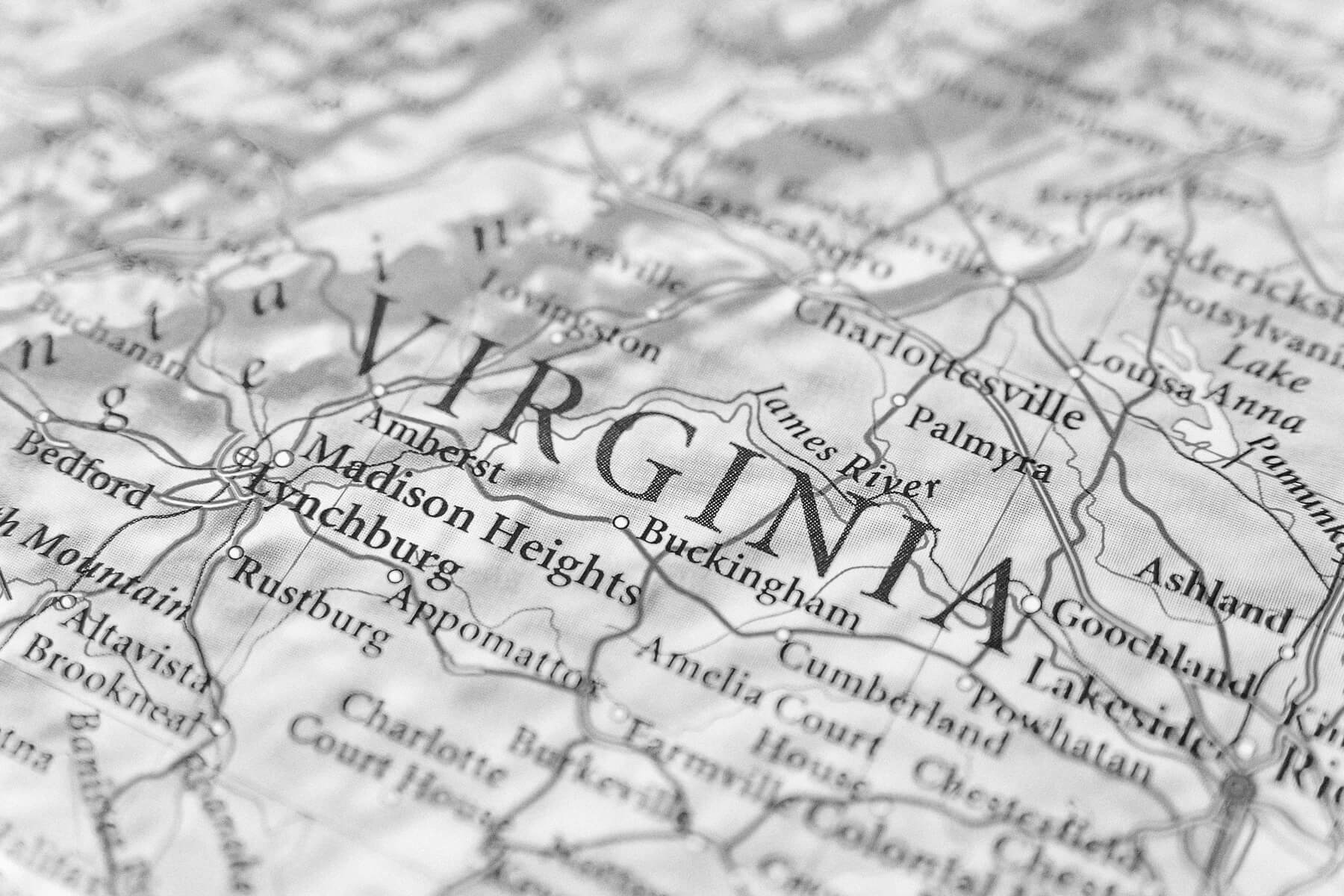
He Wasn’t Born John Wayne
Born Marion Robert Morrison in 1907 in Winterset, Iowa, the future movie star earned his longtime nickname, Duke (or “The Duke”), well before he adopted his famed stage name. According to Scott Eyman’s John Wayne: The Life and Legend, after Wayne’s family moved to California, they adopted an Airedale terrier named Big Duke, prompting local firemen to dub the skinny boy who chased after the dog “Little Duke.”
More than a decade later, with Duke Morrison set for his first starring role in The Big Trail (1930), Fox Studios head Winfield Sheehan decided to rename the young actor after maverick Revolutionary War General “Mad Anthony” Wayne, with the “John” something of an afterthought.

He Was a Talented Football Player Before Becoming an Actor
Given his 6-foot-4-inch, 200-plus-pound frame, it’s perhaps unsurprising that Wayne was a standout football player in his younger years. Per The Life and Legend, Wayne starred on a championship-winning Glendale High School football team in the early 1920s, before earning a scholarship to play at the University of Southern California. Although he lost his scholarship (allegedly after getting injured in a bodysurfing accident) during his junior year, Wayne had already spent time working in the Fox props department via his head coach’s connections, and as such was prepared to continue in the motion picture industry after his football prospects disintegrated.

John Wayne Was One of the First “Singing Cowboys”
Between his first headlining role in The Big Trail and his leap to stardom with Stagecoach (1939), Wayne toiled away in dozens of forgettable feature films through the 1930s. That included a stint in talkies — such as Riders of Destiny (1933) and Lawless Range (1935) — as a singing cowboy, an archetype soon made famous by Gene Autry. But while Autry was a legitimate musician, Wayne relied on the “movie magic” of a dubbed voice and guitar strumming to look the part. Embarrassed by the inability to perform his characters’ songs during public appearances, Wayne informed his bosses that he was retiring from the lip-syncing business.
More Interesting Reads

He Was Criticized for Being a Draft Dodger
Perhaps surprisingly for someone who represented American ruggedness in the flesh, Wayne never signed on for military service during World War II. Even as peers such as Clark Gable, Henry Fonda, and Jimmy Stewart enlisted, Wayne was initially given a pass as the sole provider for his family, and later obtained additional deferment as a movie star who best served “national interest.” Although Wayne did entertain American troops overseas on behalf of the United Services Organization (USO), he occasionally experienced a rude welcome from the servicemen who didn’t appreciate the “fake machismo” he demonstrated on screen. Later biographers have suggested that Wayne remained in Hollywood to further a career that was just taking off, with his guilt over not serving fueling public displays of patriotism.

He Frequently Enjoyed Games of Chess
His reputation as a man’s man notwithstanding, Wayne also enjoyed headier activities such as chess. His affinity for the game of kings stretched all the way back to at least high school, with one teacher recalling the teenager’s “aggressive” style in matches. Often seen hunched over a chessboard between takes on set, Wayne was said to have rung up an undefeated record against industry buddies Ed Faulkner and Jimmy Grant. However, he may not have been a particularly gracious loser; he reportedly once sent a board and pieces flying after getting badly beaten by fellow actor William Windom.

He Turned a Former Navy Warship Into a Pleasure Boat
In his later years, Wayne enjoyed spending increasing amounts of time aboard his 136-foot yacht, the Wild Goose. Wayne bought the vessel, originally built as a U.S. Navy minesweeper during World War I, in the early 1960s, and had it renovated to include such luxuries as a saloon, a fireplace, and a bridal suite. Although Wayne most treasured the family getaways aboard his yacht, he also used it to host parties for Hollywood luminaries, and lent it out to friends such as Tom Jones and Dennis Wilson. Like its owner, the Wild Goose even managed to work its way into the movie business, with appearances in The President’s Analyst (1967) and Skidoo (1968).

He Earned a Grammy Nomination for a Poetry Album
A few years after winning his first and only Oscar for his performance in True Grit (1969), Wayne nearly added to his trophy collection with the well-received release of his 1973 spoken-word poetry album, America, Why I Love Her. Written by John Mitchum, brother of Wayne’s sometime co-star Robert Mitchum, the album’s 10 tracks included such entries as the service-oriented “An American Boy Grows Up” and the anti-demonstration “Why Are You Marching, Son?” America, Why I Love Her spent 16 weeks on the Billboard 200 chart and earned a 1973 Grammy nomination for Best Spoken Word Album, although Richard Harris ultimately claimed the award for his rendition of Jonathan Livingston Seagull.

After Having a Lung Removed, He Performed for Another Decade
Possibly due to his work in the vicinity of a nuclear test site on the set of The Conqueror (1956), Wayne wound up having a lung (and multiple ribs) removed to treat cancer in 1964. Amazingly, he returned to the sort of action-heavy roles that had come to define his career, in films such as Hellfighters (1968) and Chisum (1970). Despite his willingness to soldier on, the veteran actor was clearly suffering from an array of health problems by the mid-1970s. After word of his health issues reached insurance companies, he wound up having to contribute a hefty portion to finance the insurance for what became his final film, The Shootist (1976). He succumbed to stomach cancer in 1979. (His family later created the John Wayne Cancer Foundation to help others with the disease.)












